UPSC GS 1
Tirumala Venkateswara Temple
- News: The TDP in Andhra Pradesh claimed that a report by a laboratory had found “beef tallow” and “lard” and fish oil in the ingredients of Tirupati laddu.
- About Sri Venkateswara Temple:
-
- Sri Venkateswara Temple, located in the hill town of Tirumala in Tirupati, Chittoor district, Andhra Pradesh, is a renowned Vaishnavite temple.
- It is also known as Tirumala Temple, Tirupati Temple, or Tirupati Balaji Temple.
-
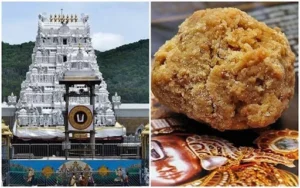
- Deity of the Temple:
-
- The temple is dedicated to Lord Sri Venkateswara, an incarnation of Vishnu.
- It is believed that Lord Venkateswara appeared on Earth to save humanity from the challenges of Kali Yuga.
-
- Wealth and Donations: Sri Venkateswara Temple is considered one of the wealthiest temples in the world, receiving significant donations from devotees worldwide.
- Tirupati Laddu:
-
- The famous Tirupati Laddu, enriched with dried fruits and nuts, holds a registered Geographical Indication (GI) tag, making it a unique and prized offering at the temple.
- The prasadam is prepared in a specialised kitchen called the Potu, where skilled artisans from a traditional community have honed their craft over generations.
-
Read also: Bulldozer Justice: A Controversial Approach to Law & Order | UPSC
UPSC GS 2
NPS Vatsalya Scheme
- News: Union Finance Minister Smt. Nirmala Sitharaman recently launched the NPS Vatsalya Scheme.
- Definition:
-
- The NPS Vatsalya Scheme, recently launched by the Union Finance Minister, is an extension of the National Pension Scheme (NPS), specially designed for children.
- This initiative aims to secure the future of minors by offering them a financial safety net through a pension plan.
-
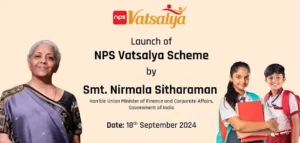
- Eligibility Criteria:
-
- The scheme is available to all minor citizens (below 18 years of age).
- Both the child and the parent must be Indian citizens.
- The account requires compliance with Know Your Customer (KYC) requirements.
- It can be opened in the name of the minor, but operated by a parent or guardian, with the minor being the sole beneficiary.
-
- Opening an Account:
-
- The scheme can be accessed through Points of Presence (PoPs) regulated by the Pension Fund Regulatory and Development Authority (PFRDA), including major banks, India Post, Pension Funds, and online platforms (e-NPS).
- Parents or guardians are responsible for making contributions to the account until the minor attains the age of majority.
-
- Contribution Requirements:
-
- The subscriber must make a minimum contribution of Rs 1,000 per annum, with no maximum contribution limit.
- The PFRDA provides multiple investment options, allowing subscribers to choose from government securities, corporate debt, and equity, based on their risk appetite and desired returns.
-
- Conversion to Normal NPS:
-
- Upon reaching the age of 18, the account can be seamlessly converted into a standard NPS account, providing continued benefits.
-
- Withdrawal Rules:
-
- Partial withdrawals are allowed after three years of account opening, up to 25% of the corpus, for specific purposes such as education, medical treatment for certain illnesses, or disabilities.
- Once the minor turns 18, the entire corpus can be withdrawn if it is under Rs 2.5 lakh. For amounts exceeding this, 20% can be withdrawn, and 80% must be used for annuity purchase in the NPS.
-
- In Case of Death:
-
- If the subscriber dies, the entire corpus is given to the nominee, typically the guardian.
- If the guardian passes away, a new guardian must be assigned after completing fresh KYC requirements.
- In the unfortunate event that both parents die, a legal guardian can manage the account without further contributions until the child turns 18.
-
Pradhan Mantri Annadata Aay SanraksHan Abhiyan (PM-AASHA)
- News: The Central Government has approved the continuation of the PM-AASHA scheme, with an outlay of ₹35,000 crore, to provide better prices to farmers and control price volatility of essential commodities for consumers.
- Definition:
-
- PM-AASHA is an umbrella scheme launched to ensure remunerative prices for farmers’ produce, aiming to provide them financial security.
- It offers states flexibility with three different components to choose from based on their requirements.
-

- Components of PM-AASHA: States can choose one of the following three components to implement:
- Price Support Scheme (PSS):
-
- Under PSS, the physical procurement of pulses, oilseeds, and copra will be conducted by Central Nodal Agencies.
- The state governments will play an active role, while the National Agricultural Cooperative Marketing Federation of India (NAFED) and Food Corporation of India (FCI) will execute procurement operations.
- The Central Government will bear the expenditure and any losses incurred during procurement as per established norms.
-
- Price Deficiency Payment Scheme (PDPS):
-
- PDPS is focused on covering oilseeds where MSP (Minimum Support Price) is notified.
- Pre-registered farmers selling their produce in the notified market yard through a transparent auction process will receive direct payments of the difference between the MSP and the modal price.
- These payments will be directly deposited into the farmers’ registered bank accounts.
- No physical procurement of crops is involved; the scheme compensates farmers for the price difference on crop disposal in the market.
- Central Government support will be extended as per norms.
-
- Pilot of Private Procurement and Stockist Schemes (PPPS):
-
- For oilseeds, states may implement PPSS on a pilot basis in selected districts or Agricultural Produce Market Committees (APMCs).
- This scheme involves private sector participation in crop procurement, allowing private players to manage the process.
- The pilot district or APMC will cover one or more oilseeds for which MSP is notified.
-
- Implementation Guidelines: Only one scheme (PSS or PDPS) may be operational in a state for a particular commodity at a time.
UPSC GS 3
Spotted Deer (Axis Axis)
- News: The overpopulation of spotted deer in the Pench Tiger Reserve has been stressing the habitat, leading to relocation efforts aimed at restoring balance to the ecosystem.
- Spotted Deer (Chital): The spotted deer, also known as Chital, is one of the most common and recognizable deer species in Indian forests.
- Distribution:
-
- Native to the Indian subcontinent
- Widely distributed across Asia, particularly in India, Sri Lanka, Bangladesh, Bhutan, and a small group in Pakistan
-
- Physical Features:
-
- Stands about 35 inches tall and weighs around 187 pounds
- Reddish-brown coat with a white underbelly
- Both males and females have small white spots, giving them the name “spotted deer”
- Males are larger than females and possess three-pronged antlers that grow up to 3 feet in length and shed annually.
-
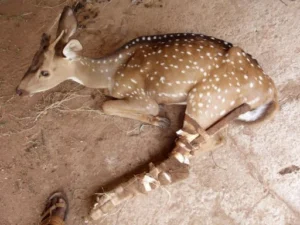
- Lifespan: 20 to 30 years
- Social Behavior:
-
- Spotted deer are social animals, often forming herds of 10 to 50 individuals
- Each herd typically has one or two males, along with females and young
-
- Conservation Status: IUCN Red List: Least Concern
Bio-RIDE Scheme
- News: The Union Cabinet has approved the Biotechnology Research Innovation and Entrepreneurship Development (Bio-RIDE) scheme to support cutting-edge research and development in biotechnology.
- Bio-RIDE Scheme Overview:
-
- The Bio-RIDE Scheme is designed to foster innovation, promote bio-entrepreneurship, and strengthen India’s position as a global leader in biomanufacturing and biotechnology.
- It aims to accelerate research, enhance product development, and bridge the gap between academic research and industrial applications.
-
- Key Components of Bio-RIDE Scheme: The scheme comprises three broad components:
-
- Biotechnology Research and Development (R&D)
- Industrial & Entrepreneurship Development (I&ED)
- Biomanufacturing and Biofoundry (a new component introduced under this scheme)
-
- Mission and Goals: Bio-RIDE is part of the Government of India’s mission to harness bio-innovation for addressing national and global challenges in areas such as healthcare, agriculture, environmental sustainability, and clean energy.
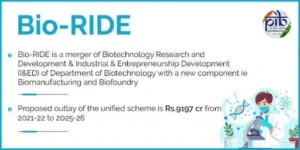
- Funding and Timeline: The proposed outlay for the implementation of the Bio-RIDE Scheme is Rs. 9,197 crore, allocated during the 15th Finance Commission period from 2021-22 to 2025-26.
- Objectives and Implementation of Bio-RIDE Scheme:
-
- Promote Bio-Entrepreneurship: Bio-RIDE will nurture a thriving ecosystem for startups by offering seed funding, incubation support, and mentorship to bio-entrepreneurs.
- Advance Innovation: Grants and incentives will be provided for cutting-edge research and development in fields such as synthetic biology, biopharmaceuticals, bioenergy, and bioplastics.
- Facilitate Industry-Academia Collaboration: The scheme will foster synergies between academic institutions, research organizations, and industry, helping to accelerate the commercialization of bio-based products and technologies.
- Encourage Sustainable Biomanufacturing: A significant focus will be placed on promoting environmentally sustainable practices in biomanufacturing, in alignment with India’s green initiatives and sustainability goals.
- Support Researchers through Extramural Funding: The scheme will play a vital role in advancing scientific research by supporting extramural funding to research institutions, universities, and individual researchers in fields like agriculture, healthcare, bioenergy, and environmental sustainability.
- Nurturing Human Resources in Biotechnology: Bio-RIDE will support the holistic development of students, young researchers, and scientists working in multidisciplinary areas of biotechnology, contributing to capacity building in the sector.
-
Naga King Chilli
- News: Recently, Seiyhama village in Nagaland celebrated the third edition of the Naga King Chilli Festival, highlighting the cultural significance of this renowned spice.
- Naga King Chilli:
-
- The Naga King Chilli, also known as Raja Mircha, Bhoot Jolokia, or Ghost Pepper, belongs to the genus Capsicum of the family Solanaceae.
- It is globally recognized for its extreme heat, which exceeds 1 million Scoville Heat Units (SHU).
-
- One of the Hottest Chillies in the World: Ranked among the hottest chillies, the Naga King Chilli holds cultural and economic importance for the Naga people, playing a vital role in their traditions and livelihood.

- Geographical Indication (GI) Tag: In 2008, the Naga King Chilli received the prestigious Geographical Indication (GI) tag, further enhancing its global recognition.
- Cultivation Practices in Seiyhama:
-
- The cultivation of king chilli is an ancient tradition in Seiyhama. Farmers typically begin searching for suitable plots in December or January, with large bamboo groves being the preferred location.
- The peak harvest occurs between August and September, with the final harvest in November and December.
-
- Cultural Significance and Usage: The Naga King Chilli has long been used in Nagaland’s hot, humid climate to preserve food, extending its shelf life and reducing waste, making it a crucial element in traditional food preservation.
Next Generation Launch Vehicle (NGLV)
- News: The Union Cabinet, led by Prime Minister Narendra Modi has approved the development of the Next Generation Launch Vehicle (NGLV).
- Next Generation Launch Vehicle (NGLV): The Next Generation Launch Vehicle (NGLV) is designed to have three times the current payload capability of the LVM3 with 1.5 times the cost, featuring reusable systems for low-cost space access and modular green propulsion systems.
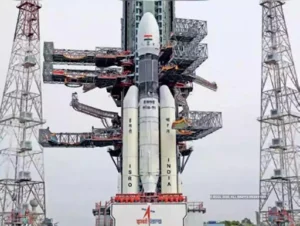
- Key Features and Development Goals:
-
- Payload Capacity: The NGLV will have a maximum payload capability of 30 tonnes to Low Earth Orbit (LEO) with a reusable first stage.
- Industry Collaboration: Indian industry will play a crucial role, investing in manufacturing capacity from the outset to ensure a smooth transition to the operational phase after development.
- Development Timeline: The NGLV project will be demonstrated with three development flights (D1, D2, and D3) over a period of 96 months (8 years).
- Funding: A total of Rs. 8240.00 crore has been approved, covering development costs, three developmental flights, essential facility establishment, program management, and launch campaigns.
-
- Significance of NGLV:
-
- Human Spaceflight and Space Exploration: The NGLV will support national and commercial missions, including human spaceflight missions to Bharatiya Antariksh Station and lunar or inter-planetary exploration.
- Satellite Launches: It will enable communication and earth observation satellite constellations to be launched into Low Earth Orbit, benefiting India’s space ecosystem.
- Boost to Indian Space Industry: The NGLV project will enhance the capability and capacity of the Indian space sector, strengthening the nation’s overall space ecosystem.
-
Read also: Food vs Cars Dilemma: Balancing Sustainability & Mobility | UPSC
Venus Orbiter Mission
- News: The Union Cabinet, led by Prime Minister Narendra Modi, has approved the Venus Orbiter Mission (VOM), marking a major step in India’s space exploration efforts.
- Definition: The Venus Orbiter Mission aims to send a scientific spacecraft into orbit around Venus, enhancing our understanding of the planet’s surface, subsurface, and atmospheric processes.
- Mission Objectives:
-
- Venusian Exploration: The mission will study the Venusian surface, subsurface, and atmosphere, and investigate the impact of the Sun on Venus’s atmosphere.
- Planetary Evolution: By examining the transformation of Venus, once believed to be similar to Earth and possibly habitable, the mission will provide insights into the evolution of both Venus and Earth.
- Scientific Outcomes: The mission is expected to address key scientific questions about Venus, contributing to our understanding of planetary environments.
-
- Role of ISRO: ISRO will develop the spacecraft and manage its launch, collaborating with various industries for the realization of the spacecraft and the launch vehicle.
- Mission Timeline: The Venus Orbiter Mission is scheduled for launch in March 2028, taking advantage of a specific planetary alignment opportunity.
- Funding and Costs:
-
- Total Approved Fund: Rs. 1236 crore
- Spacecraft Development Cost: Rs. 824 crore
The funding covers the development of the spacecraft, payloads, global ground station support, and the launch vehicle.
-
- Venus:
-
- It is the planet closest to Earth.
- It is the second planet from the Sun, and the sixth largest planet.
- It’s the hottest planet in our solar system.
- Venus has no rings.
- Venus is similar in structure and size to Earth, and is sometimes called Earth’s evil twin.
- Venus is the third brightest object in the sky after the Sun and Moon.
- Venus spins backward compared to Earth.
- Venus is one of only two planets in our solar system that doesn’t have a moon, but it does have a quasi-satellite that has officially been named Zoozve.
- Quasi-satellites, sometimes called quasi-moons, are asteroids that orbit the Sun while staying close to a planet.
- Venus is named for the ancient Roman goddess of love and beauty, who was known as Aphrodite to the ancient Greeks.
-

